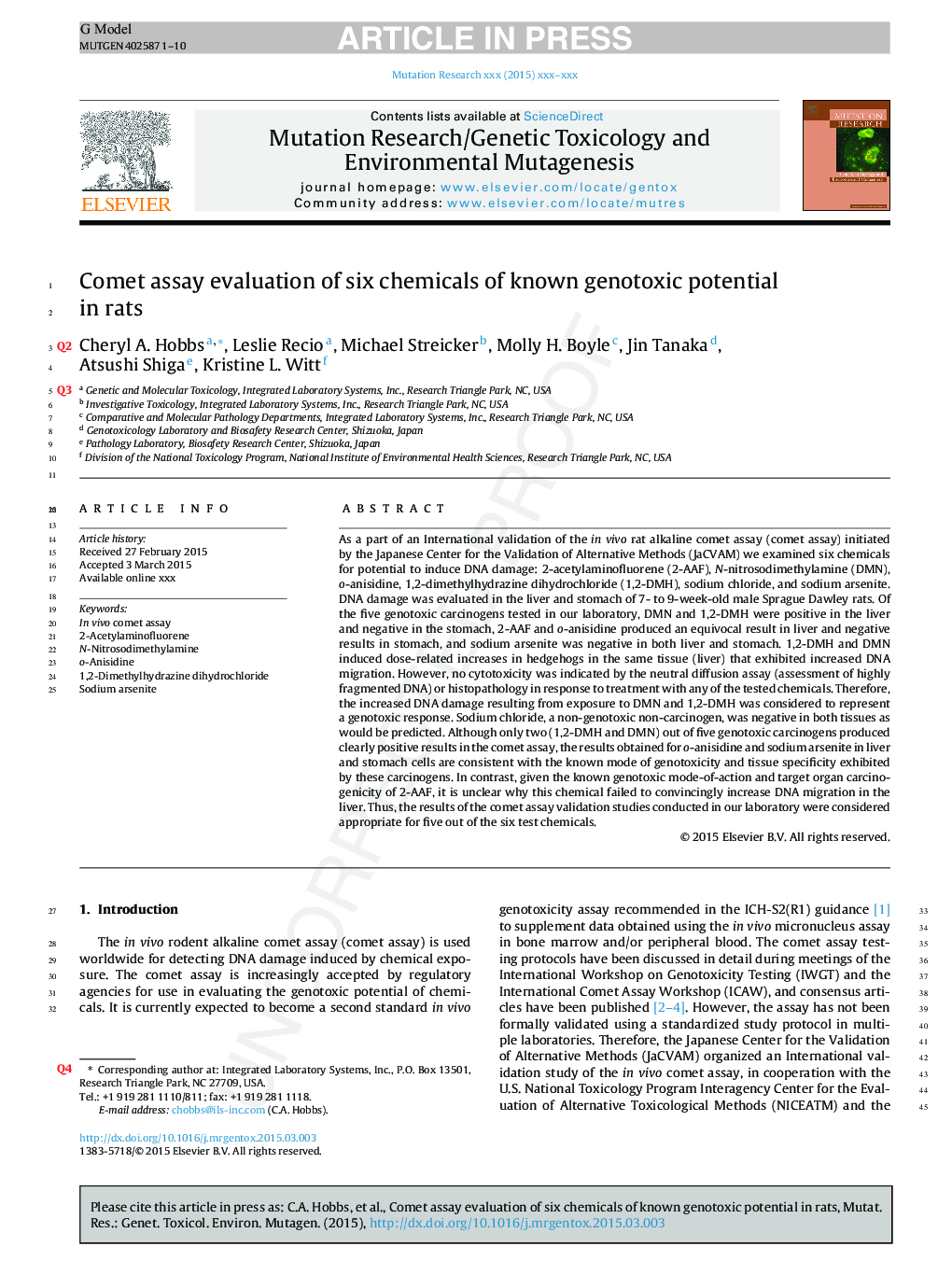| کد مقاله | کد نشریه | سال انتشار | مقاله انگلیسی | نسخه تمام متن |
|---|---|---|---|---|
| 8456380 | 1548578 | 2015 | 10 صفحه PDF | دانلود رایگان |
عنوان انگلیسی مقاله ISI
Comet assay evaluation of six chemicals of known genotoxic potential in rats
ترجمه فارسی عنوان
ارزیابی کمیت آزمایشگاهی شش ماده شیمیایی بالقوه ژنوتیسی شناخته شده در موش صحرایی
دانلود مقاله + سفارش ترجمه
دانلود مقاله ISI انگلیسی
رایگان برای ایرانیان
کلمات کلیدی
موضوعات مرتبط
علوم زیستی و بیوفناوری
بیوشیمی، ژنتیک و زیست شناسی مولکولی
تحقیقات سرطان
چکیده انگلیسی
As a part of an international validation of the in vivo rat alkaline comet assay (comet assay) initiated by the Japanese Center for the Validation of Alternative Methods (JaCVAM) we examined six chemicals for potential to induce DNA damage: 2-acetylaminofluorene (2-AAF), N-nitrosodimethylamine (DMN), o-anisidine, 1,2-dimethylhydrazine dihydrochloride (1,2-DMH), sodium chloride, and sodium arsenite. DNA damage was evaluated in the liver and stomach of 7- to 9-week-old male Sprague Dawley rats. Of the five genotoxic carcinogens tested in our laboratory, DMN and 1,2-DMH were positive in the liver and negative in the stomach, 2-AAF and o-anisidine produced an equivocal result in liver and negative results in stomach, and sodium arsenite was negative in both liver and stomach. 1,2-DMH and DMN induced dose-related increases in hedgehogs in the same tissue (liver) that exhibited increased DNA migration. However, no cytotoxicity was indicated by the neutral diffusion assay (assessment of highly fragmented DNA) or histopathology in response to treatment with any of the tested chemicals. Therefore, the increased DNA damage resulting from exposure to DMN and 1,2-DMH was considered to represent a genotoxic response. Sodium chloride, a non-genotoxic non-carcinogen, was negative in both tissues as would be predicted. Although only two (1,2-DMH and DMN) out of five genotoxic carcinogens produced clearly positive results in the comet assay, the results obtained for o-anisidine and sodium arsenite in liver and stomach cells are consistent with the known mode of genotoxicity and tissue specificity exhibited by these carcinogens. In contrast, given the known genotoxic mode-of-action and target organ carcinogenicity of 2-AAF, it is unclear why this chemical failed to convincingly increase DNA migration in the liver. Thus, the results of the comet assay validation studies conducted in our laboratory were considered appropriate for five out of the six test chemicals.
ناشر
Database: Elsevier - ScienceDirect (ساینس دایرکت)
Journal: Mutation Research/Genetic Toxicology and Environmental Mutagenesis - Volumes 786â788, July 2015, Pages 172-181
Journal: Mutation Research/Genetic Toxicology and Environmental Mutagenesis - Volumes 786â788, July 2015, Pages 172-181
نویسندگان
Cheryl A. Hobbs, Leslie Recio, Michael Streicker, Molly H. Boyle, Jin Tanaka, Atsushi Shiga, Kristine L. Witt,
